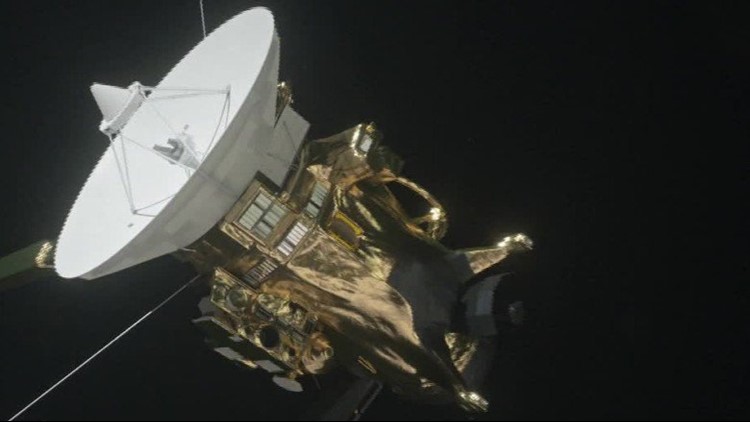CNN– Contact has been lost with the Cassini spacecraft after it completed a “death dive” into the upper atmosphere of Saturn and transmitted its final signal, according to NASA.
The spacecraft deliberately sank into Saturn’s upper atmosphere at a high speed and plunged itself into the planet just after 6:30 a.m. ET Friday (Sept. 15). Given the amount of time it takes signals to reach Earth, the final signal and last bits of data reached the Deep Space Network’s Canberra Station in Australia about an hour and a half later.
For about a minute, Cassini was able to transmit new data about the planet’s composition as long as its antenna remained pointed toward Earth, with the assist from small thrusters. Then, the spacecraft burned and disintegrated due to the heat and high pressure of the hostile atmosphere. It became part of the planet it set out to explore.
No spacecraft has ever been so close to Saturn.”You can think of Cassini as the first Saturn probe,” said Linda Spilker, Cassini project scientist. On Thursday, Cassini took its last images and transmitted all the data on its recorder to prepare for the final plunge.
After launching in 1997, traveling nearly a million miles and reaching the Saturn system in 2004,exploring the planet and its moons. The data and images led to numerous discoveries that changed how scientists think about our solar system.
Cassini had its closest approach with Saturn’s moon Titan on Monday, dubbed a “goodbye kiss” by the mission’s engineers because it provided the gravity assist that sent the spacecraft on its final encounter with Saturn. Mission scientists and operators gave Cassini this fiery send-off on purpose. Although many other options were considered — such as “parking” the spacecraft in orbit — they didn’t want to risk Cassini colliding with any of Saturn’s moons.
Cassini data and observations revealed that while seemingly inhospitable to us, the moons Enceladus and Titan could be habitable for some form of life. And NASA didn’t want to risk contaminating the moons or any future studies of them with Earth particles. Although Cassini has been in space for 20 years, microbes from Earth could still exist on the spacecraft without air, water or protection from radiation.
Although the mission itself has ended, the data and observations provided by Cassini will provide new details about the planet, its unique rings and its moons for decades to come.During the final plunge, the Ion and Neutral Mass Spectrometer acted as the “nose” of the spacecraft, directly sampling the composition and structure of the atmosphere — something that can’t be done from orbit, said Hunter Waite, team lead for the spectrometer.
This was in the hopes of investigating the “ring rain” phenomenon discovered by NASA’s Voyager mission in the early 1980s, in which it appeared that the rings were raining down material on the planet and causing changes in the atmosphere. The spectrometer could determine what material is from the rings and what material is part of the atmosphere.
To read more, CLICK HERE.



